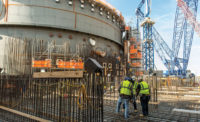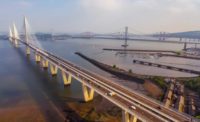
The scheduled shutdown of a process unit, known as turnaround, occurs periodically in industrial facilities. Turnaround allows for tasks that require a unit to be offline. Due to lost revenue during an extended outage, planning for turnarounds must ensure that tasks are completed as efficiently as possible.
In general, two types of tasks occur during a turnaround: maintenance and completion of capital projects. Unlike maintenance, capital projects usually begin before a shutdown. Tie-ins to equipment, piping, and electrical and instrumentation systems are most often planned ahead of time and done during a plant outage.
Capital projects can be a big factor in determining the magnitude of a shutdown. That’s why two types of costs should be considered when talking about turnaround expenses:
- Lost revenue due to an outage. Each offline day for a continuously operating plant has a high cost associated with it. If reducing turnaround scope shortens offline days, the savings can be extraordinary.
- Construction expenses. During the turnaround, construction costs run much higher due to several factors, including lower productivity because of higher labor density and longer transition times during shift changes. Moreover, working around the clock requires significant craft overtime at premium cost. Also, indirect construction costs tend to rise during an outage due to added administrative tasks and extra planning.
The most important step in reducing turnaround scope is alignment of all stakeholders on the project. This activity should start from project kickoff and continue throughout.
Turnaround Scope Reduction
Techniques for managing turnaround scope will vary, based on the specific circumstances of each project. Here are some suggestions applicable to each project.
- Isolation. Many piping components, equipment and instruments in a process unit are designed to allow isolation for maintenance. Those designs can be utilized to perform capital project tie-ins as well.
Often, performing isolation to do tie-ins is included in the project plan; however, due to lack of coordination with the operations group and poor assumptions about the ability to isolate, this strategy often is not fully implemented. The design team should work with the plant operations group to review each tie-in and explore the feasibility of isolations for final tie-ins.
- Hot taps and instrumentation hot cutovers. Hot-tap process, which allows for safely cutting into a pressurized stream, can help tie into an existing pipe system. Also, in the electrical and instrumentation arena, hot-cutover techniques are used to migrate new systems in multiple phases. Planners should compare the costs of online tie-ins versus performing them during a turnaround.
- Minimizing field fabrication using surveys. It is common practice that part of a piping job is designated as field fabrication because of the difficulty in identifying obstacles such as existing structural steel and cable trays. When such obstacles can’t be located, field routing becomes the preferred way to avoid making field modifications on pipe that was fabricated off site. But for a turnaround project, all efforts should be made to do fabrication before the turnaround. This means gathering enough as-built information via surveying techniques such as 3D laser scanning to determine piping routes and fabricate around them accordingly.
- Optimize spacing to avoid turnaround demolition. Some work may be scheduled for turnaround due to a lack of space in the plant and the need to demolish existing piping and equipment. However, the design team should conduct value engineering for building the new assets without removing key parts of an operating unit.
The ideal situation is to install new equipment or piping before the turnaround. The out-of-service asset is disconnected during turnaround, and, if required, can be demolished after start-up.
- Utilizing unplanned shutdowns. Since business continuity is important for industrial facilities with continuous operation, the reliability of most plants is high enough to minimize undesired outages. However, unplanned shutdowns occasionally happen and can offer tie-in opportunities for capital projects.
The key to utilizing these outages is to plan for the unplanned. To this end, the project-execution team should closely track the progress of engineering and procurement. As soon as a construction work package is finalized and its materials are available, the team is ready to carry out the work when a shutdown opportunity occurs.
- Shifting scope to post-turnaround. Not everything associated with turnaround scope must finish before start-up. With proper planning, certain activities can be postponed until after the turnaround, providing that the safety of plant operations and construction are not compromised. Post-turnaround activities include paint, insulation, fireproofing, heat tracing (if the turnaround completes during warm weather), and noncritical structural and civil items.
Every minute spent on turnaround planning has a significant potential for savings.
Houman Payami, project manager at Fluor Corp., has 10-plus years of experience in project execution within the energy, chemical and power industries. He can be reached at houman.payami@fluor.com.





Post a comment to this article
Report Abusive Comment